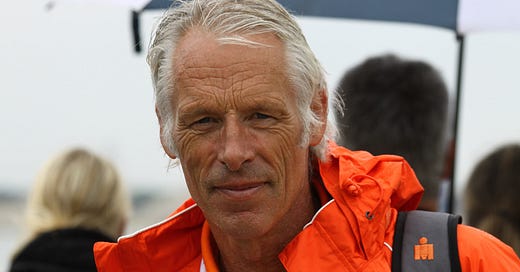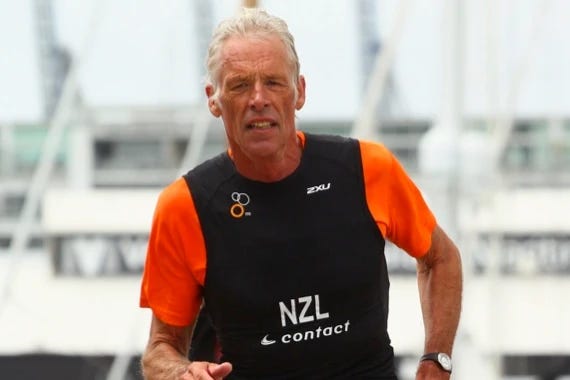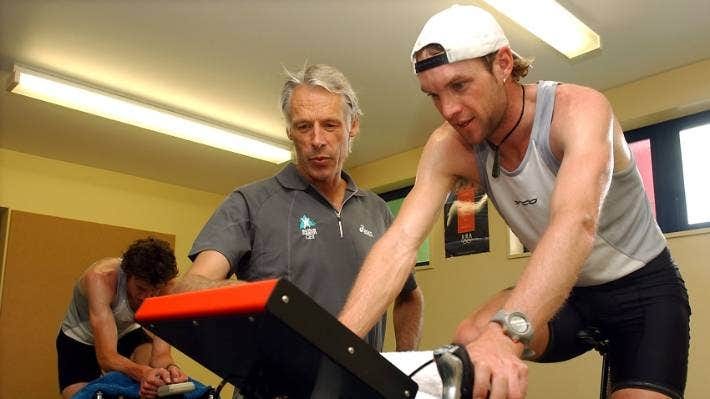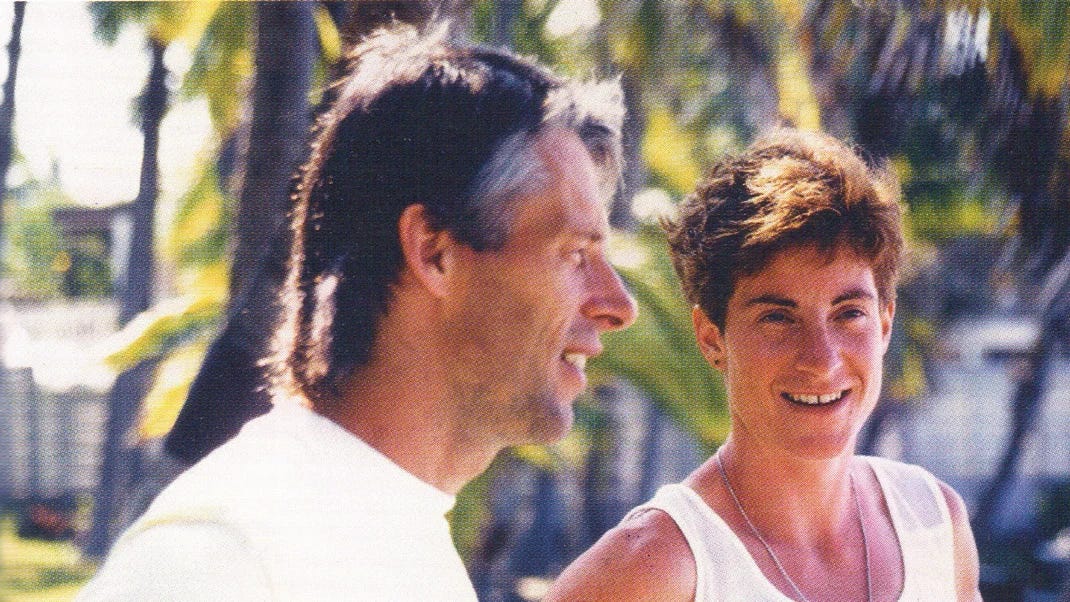I arranged a call with John to fact check a section of my new book.
We got to talking and there’s too much goodness, not to share.
John is:
a medical doc by training
author of numerous books on endurance sport & coaching
coach to 7 Olympians (4 male/3 female)
coach to world champions in SIX different disciplines
the winner of numerous agegroup world championships, spanning 1993 to 2013
John’s is more than a role-model. He’s an exemplar of who I try to be.
Let’s dig in.
I’m writing in John’s voice. My comments in italics.
What It Takes, Today vs 2000
Triathlon is much tougher today.
In the early days of the sport, my relationship with Erin Baker (10 World Titles across distances & disciplines) meant we figured out how-to-train ahead of the rest of the world.
Back then 4/4/4 (workouts of each sport - swim, bike, run) would let an athlete be very competitive at a level of 90-95% potential. Meaning, you hit ~90% of your single-sport potential, across all disciplines and you could be a champion.
Today, it’s moved to 98%, which means the athlete must have exceptional physical and mental resilience.
Lactate
Yes, I still use lactate.
However, what’s most important is helping the athlete learn how different efforts feel (easy, steady, mod-hard, hard, very hard).
Too often athletes lack the ability to evaluate the quality of their sessions without data. Something I miss about getting older is I can no longer train side-by-side with them. When I was younger, I could teach zones on the fly.
Know your grey zones. Metabolic physiology moves around from day to day. Athletes need to know RPE vs power/pace/heart rate to avoid training much harder than they realize.
Link your zones to RPE and don’t get lost in the data
I gave John a nudge to make his book, The Training Intensity Handbook, available online, and hope to be able to bring it to you. This short book has been invaluable for teaching coaches, and athletes, about lactate and training zones.
Racing After Sixty
Racing was getting harder, the drive to win was still there, but it wasn’t fun anymore.
Winning becomes addictive, I needed a detox.
I did the length of New Zealand ride as it was an event without competition. I was expecting to ride in the mornings, hang out with a good friend and read in the afternoons.
Reality turned out quite different.
Altitude
There’s more going on than oxygen transfer in the blood. The athlete’s entire physiology is improved at the cellular level, right down to the mitochondria.
We did a study with the University of Otago. It was quite expensive to prove something we knew already.
John was the first coach I saw track desaturation at an altitude camp.
We track resting physiology at our altitude camps. An athlete who is coping well will have their SpO2 right up at rest (98-100%).
When we do fast run reps, to give a desaturation stimulus, we will take SpO2 down to 86-88% and as low as 84%. Never go below 80% as this level prolongs recovery.
Heart Rate Variability & Recovery Metrics
We’ve used HRV off & on. Our athletes are gathering baseline data now in advance of an up-coming altitude camp. I’ve found HRV isn’t reliable enough and the interpretation is not easy. We never use HRV by itself.
At this point, I asked him about tracking Urea. I think I noticed an eyeroll at the other end of the video call.
Look, the basics will tell you what you need to know.
Morning Resting Heart Rate
Subjective Perception
Power/Pace vs Training HR
Most importantly, how the athlete looks and feels. Watch the athlete across the day and you will see what’s going on.
Mantras & Racing
I shared two mantras John had told me at key moments in my elite career.
There’s no generic formula for advice. I try to tell the athlete what they need to hear in the moment.
Most athletes race too fast, too early. One of the goals of learning “feel” is to understand how even pacing feels across an event.
You will see heart rates in racing far higher than anything generated in training. This is why feel is important.
Elite Errors
I’m a Lydiard-coach. 80% of the athlete’s volume should be Zone 1 & 2 (Moderate Domain).
Most elites are doing too much Z3/4/5 training and doing it too often. Even Zone 3, requires the athlete to be very fit to handle.
Modern Coaches are too focused on specific race demands. Specific sessions are demanding, 1-2x a week is plenty. Some athletes are seeking 5x a week. As a result, they are chronically fatigued and racing tired.
Back To Table of Contents












thanks for sharing this! lots of gold
- how the athlete looks
- 20 % of vol above Z2 and 1-2 x W. Plenty for most.